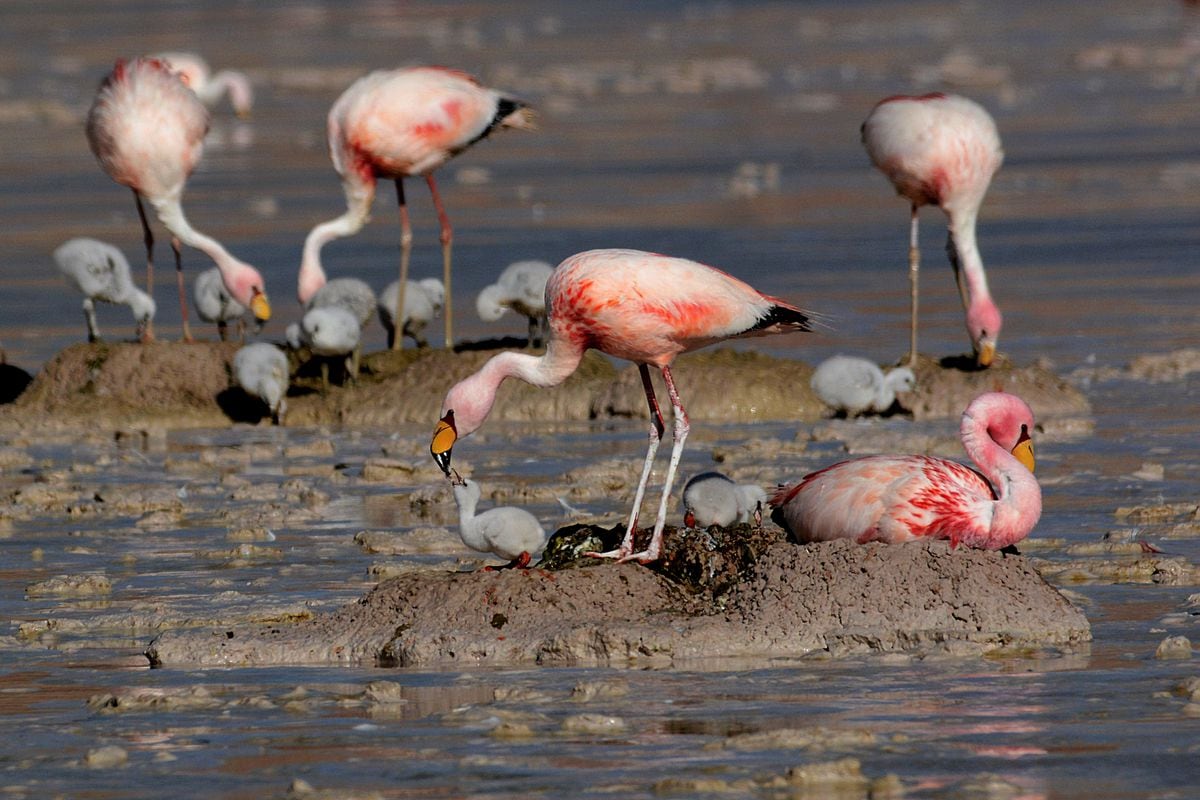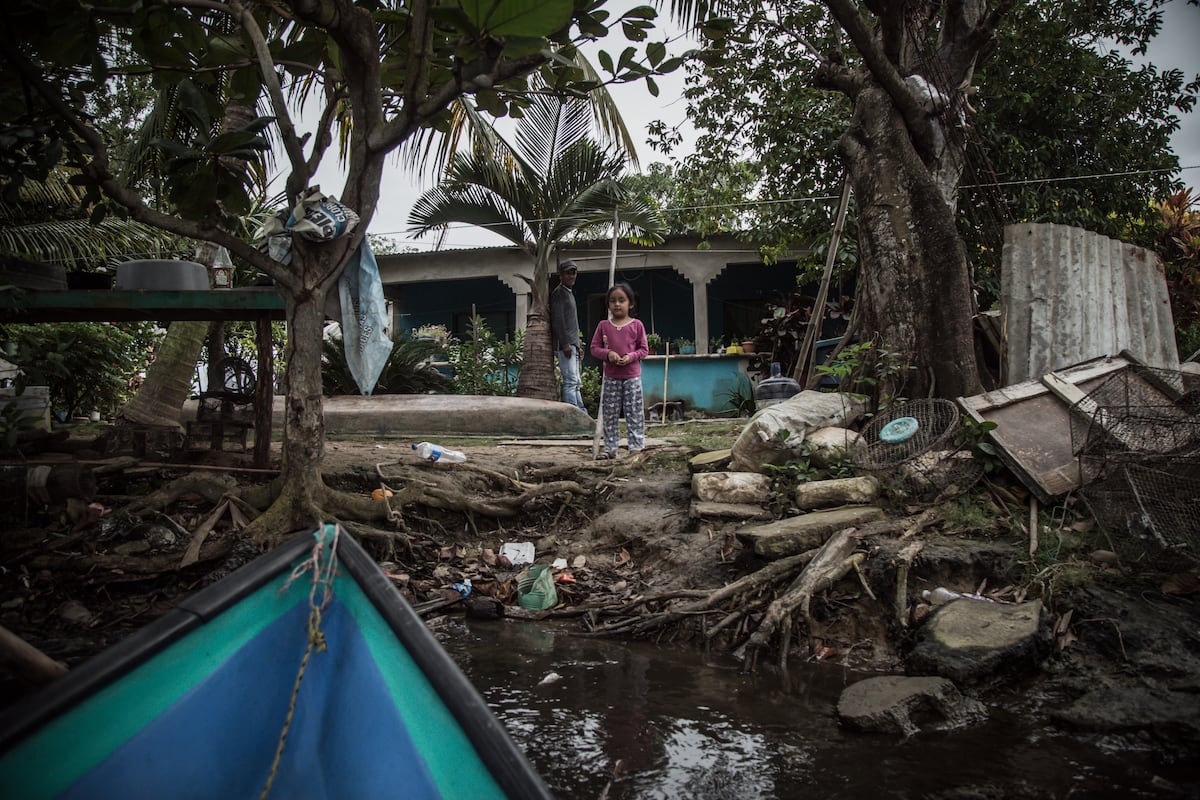EL PAÍS offers the América Futura section open for its daily and global informative contribution on sustainable development.
If you want to support our journalism,
subscribe here
.
The earth returns a dry sound and cracks with each step.
Under the sun of an autumn afternoon at the end of March, there are hardly any puddles, mud, dead fish and debris on the ground.
Some dogs wander aimlessly, a cyclist rides at a slow pace and a group of men get lost on the horizon with metal trackers in search of some lost treasure.
From a distance it looks like a beach frozen in time, but it is the Lobos lagoon, an 800-hectare water mirror located in the northeast of the province of Buenos Aires that since last November has experienced one of the worst downspouts in its history and has practically dry.
Argentina has just left behind the biggest heat wave recorded in decades, which also coincided with the final stage of La Niña, a period of extreme drought in the entire region with the lowest rainfall levels in sixty years, which according to experts it should begin to reverse from 2023. A report prepared by the Information System on Droughts for the South of South America (SISSA) specified that in the province of Buenos Aires, 40% of the territory is experiencing a situation of extreme drought.
Lagoons, streams and rivers in Buenos Aires appear empty or with water levels well below the usual average.
In Lobos, the downspout began last October and at the end of the year there was an unusual fish kill.
Now, to find water you have to walk between 200 and 300 meters from the coast, although in some areas the lagoon is even further removed.
In its wake, the drought altered the ecosystem: the death of thousands of silversides is compounded by the appearance of birds that are not normally seen in the area, such as flamingos or roseate spoonbills.
View of the Laguna de Lobos in the province of Buenos Aires, Argentina.Valentina Fusco
Ignacio Suárez, Secretary of Tourism of Lobos, goes back to 2009 to remember a similar drop, although not as dramatic.
“It was also in the middle of a drought,” he tells América Futura, while he stirs up a plastic bottle stuck in the ground with his foot.
The drought also exposed the ecological footprint: in these months they did a great cleaning of the lagoon and extracted more than a hundred tires and thousands of plastic and glass bottles.
The main tributary of the Lobos lagoon is the Las Garzas stream, which has been completely dry for months, to such an extent that many tourists and residents organize bicycle rides.
About 40 kilometers away, at the other end is the Navarro lagoon, which completely disappeared in February and can now be crossed on foot.
There is not a drop of water left there: only pastures and boats that rest on the dry land.
Persistent rain, the only hope
"Generalized rain is needed that persists over time," explains Natalia Gattinoni, a graduate in Atmospheric Sciences and a Climate and Water researcher at the National Institute of Agricultural Technology (INTA).
Argentina went through the La Niña phenomenon for three consecutive years, the longest period of drought recorded in 50 years, which a few weeks ago showed signs of coming to an end and giving way to a more humid stage and with rainfall in line with the usual averages. or a little above, according to surveys of the agricultural sector that estimate that only in this crop season the losses climb to 15,000 million dollars.
A report published in March by the National Meteorological Service highlighted the low humidity in the soils,
Gattinoni clarifies that for the normal level in the lagoons to recover, it is not enough with deluges in those bodies of water, but that they must be produced especially in the water basins of rivers and streams.
In addition, he details that the water must also drain from the fields.
"The hydrological process has to be regularized, I hope that this fall the rains will be greater and allow recovery," he told América Futura.
Trackers looking for metals in Laguna de Lobos.Valentina Fusco
The transition from La Niña to El Niño
With the end of the La Niña phenomenon – a warming of the waters of the Pacific Ocean in Peru that produces changes in the atmosphere that results in a drop in precipitation around the world – wetter cycles are now expected.
“We are entering a stage of more rainfall.
Although at the moment we are in a phase of neutrality, you can expect a quarter with chances of normal or above-average rains”, Gattinoni enthuses.
The biologist Sergio Federovisky, Vice Minister of Environment and Sustainable Development of Argentina, emphasizes that in the coming years a "sharpening of the extremes" is to be expected: meteorological episodes that have always existed, such as droughts or severe storms, but now due to of climate change become more violent, recurrent and acute.
“If there is a four-year drought, it is expected that a lagoon will disappear.
And the other side - he warns - will be increasingly violent.
It is possible that once the drought is over, floods will appear that will also be brutal”.
Federovisky analyzes that the phenomenon of downspouts from rivers, streams and lagoons has another effect as serious as the impact on flora and fauna: the possibility that these wetlands are captured for productive or real estate developments through fires.
For the official, it is clear that the loss of large bodies of water is not harmless.
“It has social, productive and ecological consequences.
The alteration that it produces in the ecosystem implies an impact that is difficult to clean up ”, he points out.
The Lobos Lagoon became a desert.Valentina Fusco
“We look at the sky waiting for it to rain”
In Chascomús, a city of 33,000 inhabitants 120 kilometers from Buenos Aires, there are seven interconnected lagoons that are also experiencing record lows.
The main one, a great tourist attraction, has an area of 3,000 hectares and in recent months the depth has fallen from almost 3 meters to 1.40.
Half an hour from there, the Vitel lagoon is completely dry.
“The situation is very worrying, in this area it rains about 900 millimeters a year, which is the same as evaporation.
Three years ago the rainfall was close to 500 millimeters, but the evaporation was maintained and this summer due to the heat wave it deepened”, details the mayor, Javier Gastón.
Before América Futura, he graphs it in a few words: “This is solved with rain.
We all look at the sky, those who have faith pray that the lagoons recover and the fields can produce.
Rainfall was announced for February, then for March, but the water still does not appear ”, he laments.
In Navarro, 150 kilometers away, the last rays of the sun illuminate the desert that the lagoon became.
On the shore, Sofía Almeida drinks mate, a young woman from the area who desolately observes the remains of the mirror of water that hundreds of tourists used to visit every weekend and which became an almost obligatory walk for the inhabitants.
"It is very sad, it was a deep lagoon and now there is not a drop of water," she sums up.
She looks at the horizon and speculates that it will have to rain a lot to see her again in her splendor.
A few minutes later she puts her belongings away, she slowly walks away and the waterfront is completely empty.




/cloudfront-eu-central-1.images.arcpublishing.com/prisa/OGGQZRYQ7VCBDOAJ24KQNAEABM.jpg)
/cloudfront-eu-central-1.images.arcpublishing.com/prisa/ZZY6M2QEHBBVPENWXS3XH2U5O4.jpg)



